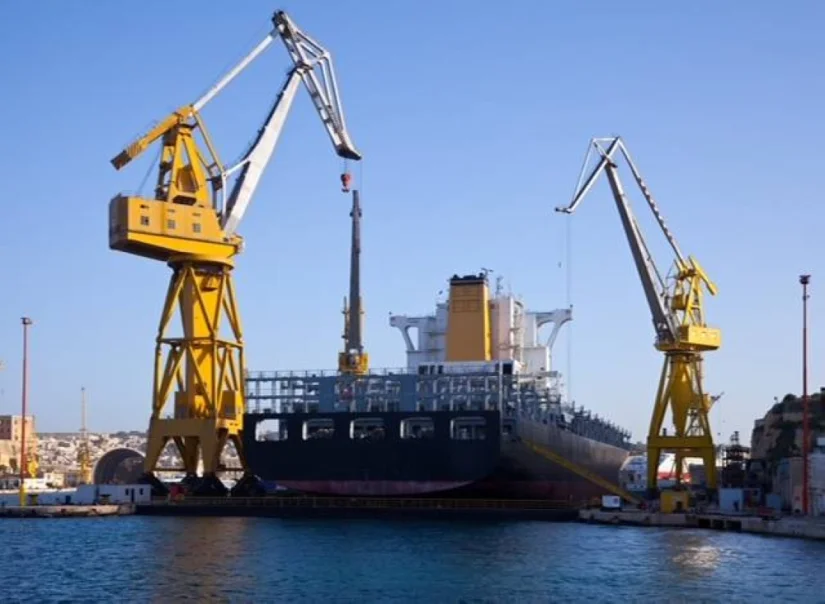How shipbuilding contributes to PH economic growth
The Manila Times | March 19, 2022

Big ship drydocks abound in the country. (PHOTO: THE MANILA TIMES)
SHIPBUILDING and seafaring have long been part of the Filipino heritage. Ancient peoples from various places like Pampanga, Laguna, the Visayas, Butuan, the Sulu Archipelago and Zamboanga Peninsula already had thriving boat-building industries long before European contact.
A constant reminder of our seafaring legacy is the fact that the barangay, the country’s smallest political unit, was named after the boats that carried entire communities from other parts of Asia to present-day Philippines.
Filipino seagoing traditions have been kept alive through the mariners working on the tens of thousands of oceangoing vessels that are vital to global commerce. Surprising to note is that a growing number of these ships are, in fact, made domestically, in industrial parks such as the one in Balamban, Cebu.
Importance of domestic shipbuilding
According to the Philippine Statistics Authority, the Philippines’ ocean industries accounted for 3.6 percent of the country’s GDP in 2018, worth P622.2 billion from P577.4 billion the previous year.
In descending order of value, this sector comprises service, industrial and fishing activities. In that year, industrial activities – which include shipbuilding, repairs and upgrades – contributed 34.2 percent of the value of the country’s ocean industries and may be set to surpass services which accounted for 36.7 percent.
This reflects the country’s growing role in building oceangoing vessels that support the world’s ever-expanding trade.
According to data from 2019, the Observatory of Economic Complexity pegged the country as the world’s fifth biggest supplier of ships by tonnage, with most of these vessels being exported to Japanese, Taiwanese, German, Liberian and French Polynesian markets.
While the Covid-19 pandemic has slowed this growth down, there are already signs that the industry is set for recovery.
Exported vessels are overwhelmingly built in shipyards operated by foreign investors in partnership with local companies such as the Aboitiz Group. The shipyards engaged in for-export construction comprise only a small fraction of the approximately 100 shipyards located throughout the country.
Most Filipino-owned shipyards are involved mainly in the refitting and maintenance of ships, something that is being explored as another potential revenue stream for local ocean industries.
Main challenges to better growth
A 2017 paper published by the Department of Trade and Industry (DTI) titled “The Philippines in the Shipbuilding Global Value Chain” identified a host of opportunities and roadblocks for the local shipbuilding industry.
At the time of the study, there were about seven large and medium-sized shipyards and over 90 small shipyards throughout the country. The vast majority of shipyards employed about 50,000 full-time workers and 90 percent were engaged in maintenance and upgrades rather than construction.
While these shipyards were and are still major economic contributors, the DTI identified the lack of highly skilled workers, the low capacity of local suppliers, and poor investor marketing as hampering their prospects of wider success.
As with many other highly skilled Filipinos, talented maritime engineers, technicians, and other workers often prefer to seek employment in shipyards abroad due to the prospect of better pay. This is partly good news, as this means that the country is producing internationally competitive talent. Regardless, this means that local shipyards are not always able to attract individuals with the specific skill sets they need.
Additionally, while local shipyards are either flourishing or set to recover, the Philippines lacks local enterprises that could supply them at competitive rates. Neither the parts fabrication nor local iron and steel industries are yet capable of supplying the current and projected demands of local shipbuilding. As a result, much of the supply chain for ship construction and refitting has to be based in overseas locations, particularly China, Japan and South Korea.
Hope for PH shipbuilding industry
Thankfully, much has been done to lift those hurdles in recent years. Significant efforts have been made by the Philippine government and private sector partners to attract foreign investment and further develop local shipbuilding and supply chains.
Recently, large investors such as Cerberus Capital Management and Austal presented their intention to enter or continue expansion within the local shipbuilding industry. Along with rising salaries, these investments may also convince more skilled workers to seek or continue employment domestically.
If these developments continue, local shipbuilding may develop into an even more critical part of the economy – more globally vital, not to mention lucrative, phase in the nation’s seagoing heritage.
Source: The Manila Times
